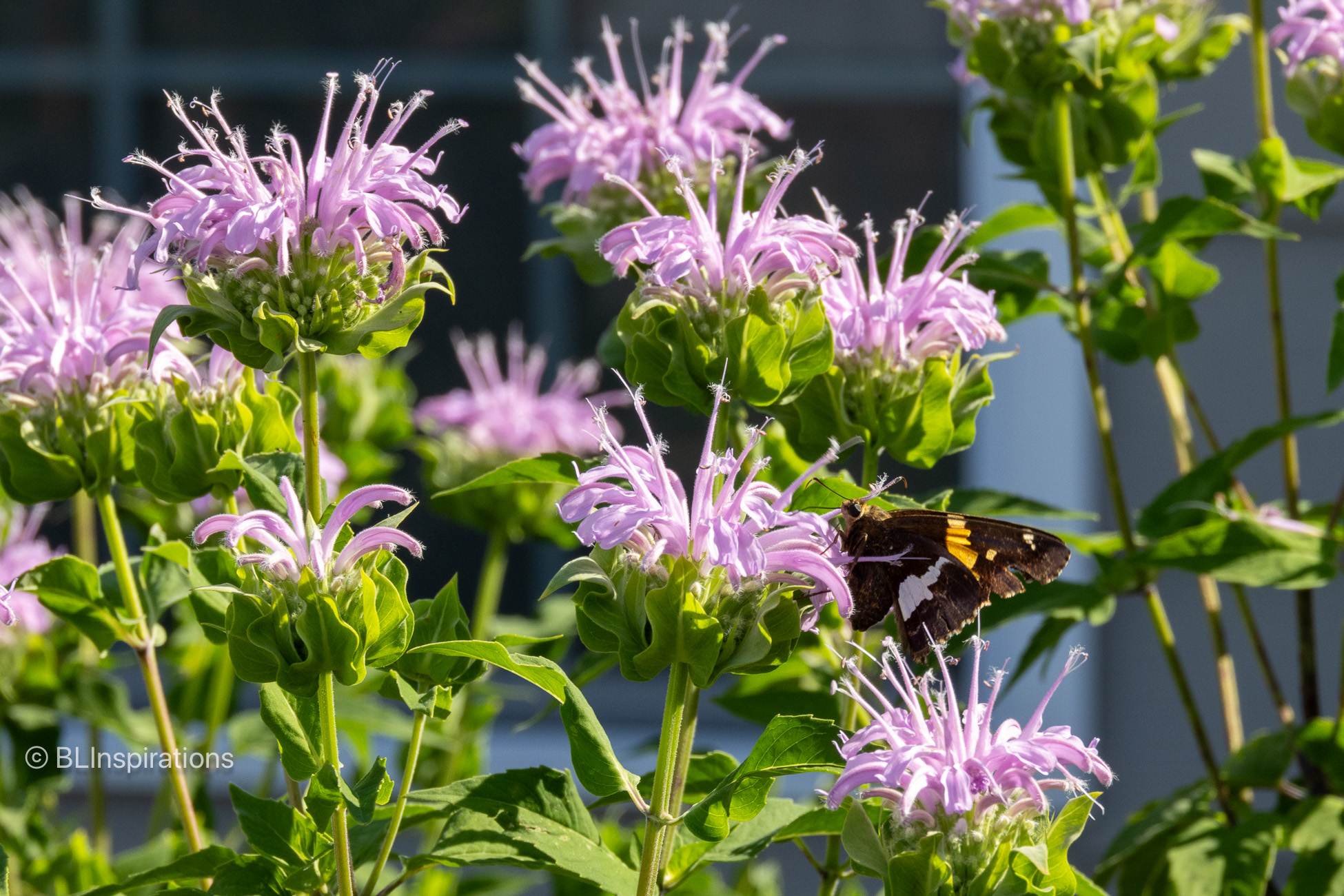We have bee balm, also known as wild bergamot (Monarda fistulosa) growing in our pollinator garden. It is a perennial plant in the mint family and attracts all types of pollinators. The plant grows in clumps of stems; each stem ends with several branches, and each branch ends in a cluster of narrow flowers. Each cluster of flowers forms a seed head that has one seed for each pollinated and fertilized flower.
When I photographed bee balm from our garden, I tried to capture several of plant stages, including the fully developed flowers, the initial seed head after the flower petals are gone, the dry seed head, and the actual seeds. These photographs illustrate those stages of the bee balm flower. Please click an image to see a larger version of it.
Bee Balm Flower
This photograph shows bee balm flower clusters in our pollinator garden, with an unverified species of butterfly.
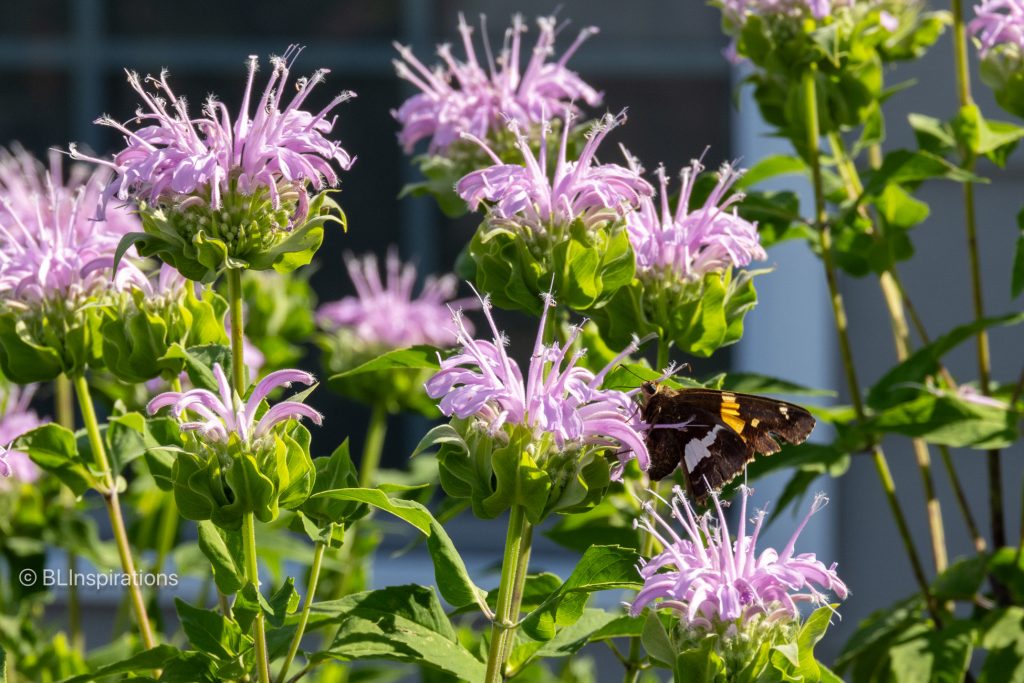
Bee Balm Seed Head and Seeds
This photograph shows a green bee balm seed head just after the flower petals have fallen off. One seed forms in each of the tubes associated with each pollinated and fertilized flower. This image was made from 15 separate photographs: three photos were taken at different exposures and the camera created an HDR image from them. This was repeated for each of five focus points. The HDR images were then focus stacked with Helicon Focus software. (Please see the Definitions, Software, & Apps page for additional information about these techniques.)
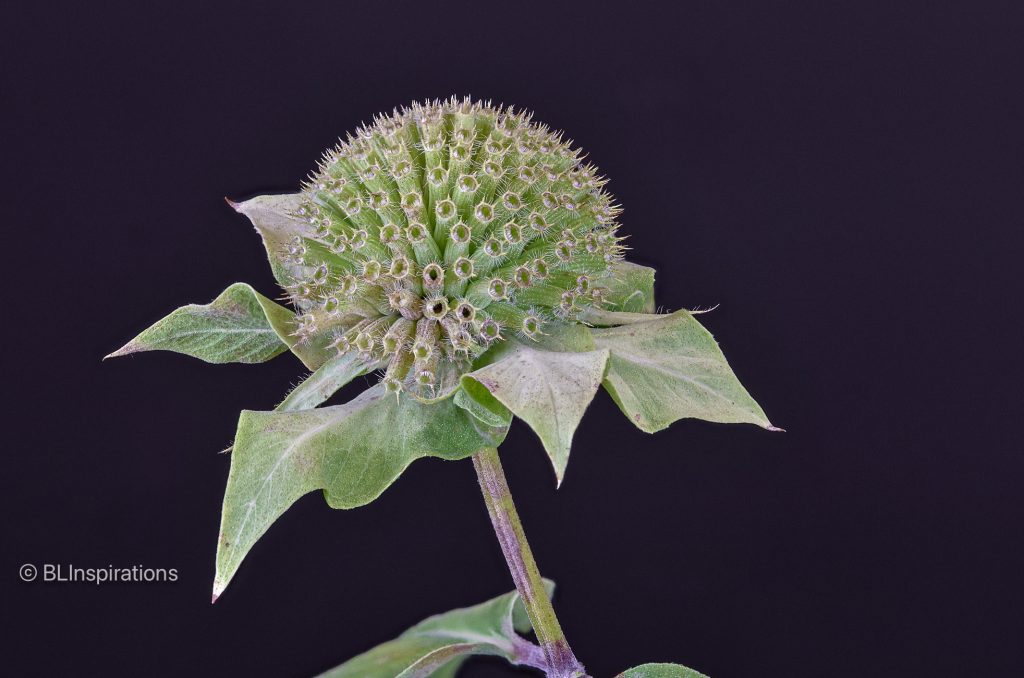
This photograph shows a dry bee balm seed head; individual seeds are still in the small tubes. This image was made from 12 separate photographs: three photos were taken at different exposures and the camera created an HDR image from them. This was repeated for each of four focus points. The HDR images were then focus stacked with Helicon Focus software and some distracting leaves were removed in Photoshop. (Please see the Definitions, Software, & Apps page for additional information about these techniques.)
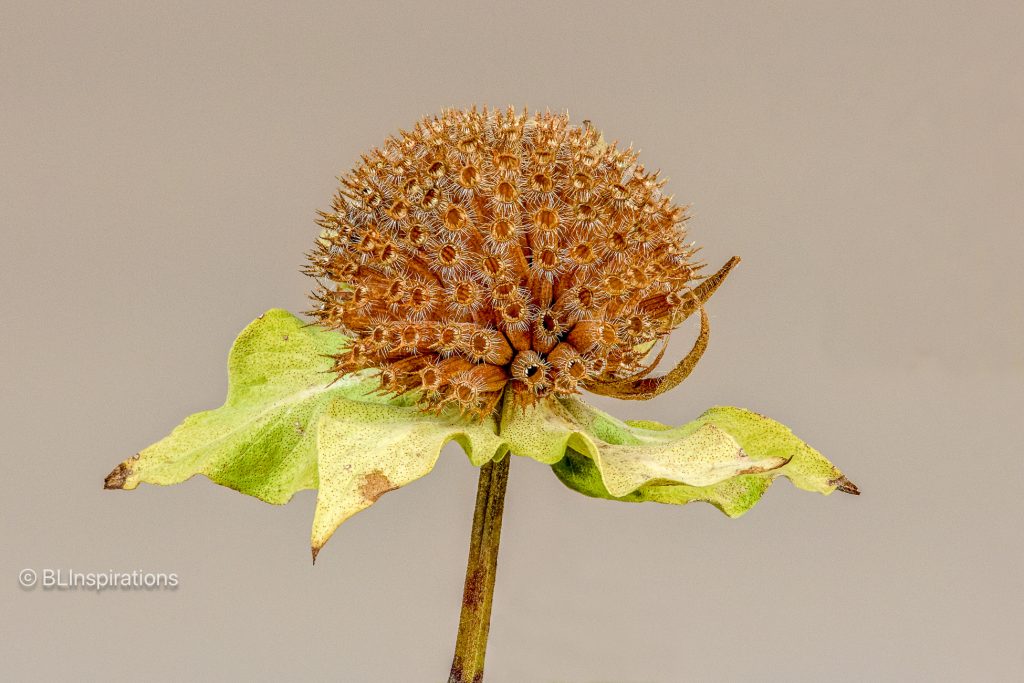
Bee balm seeds – each seed is about 1/16″ long. This image is an HDR image created by the camera from three separate images taken at different exposures. (Please see the Definitions, Software, & Apps page for additional information about this technique.)
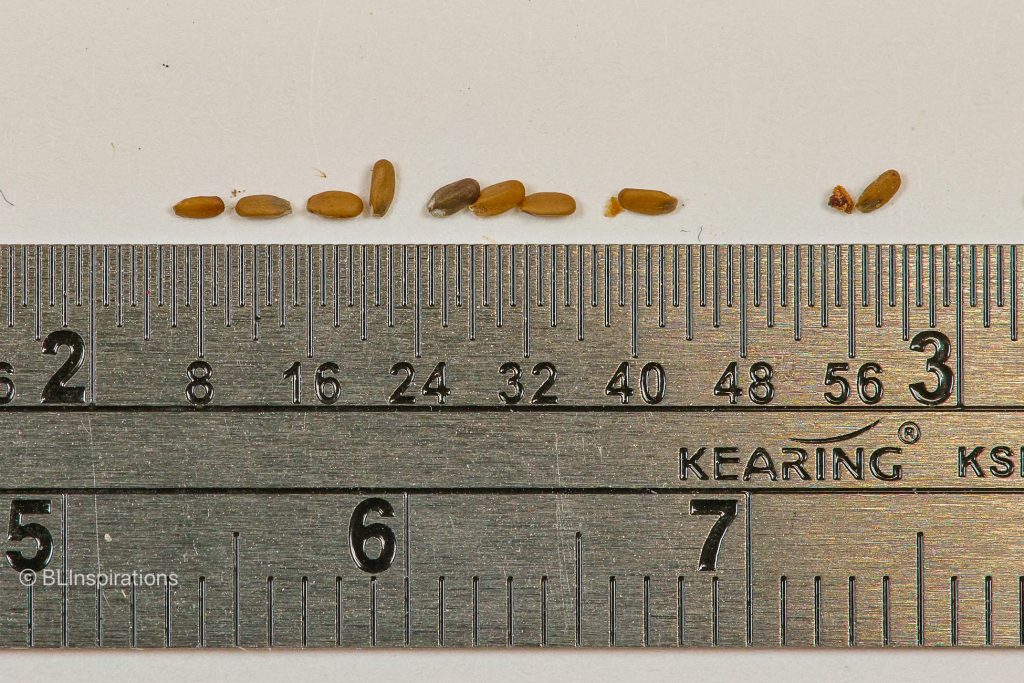
This is an extreme closeup of several of the bee balm seeds above. Each small division on the rule is 1/64″. This image is an HDR image created by the camera from three separate images taken at different exposures. (Please see the Definitions, Software, & Apps page for additional information about this technique.)
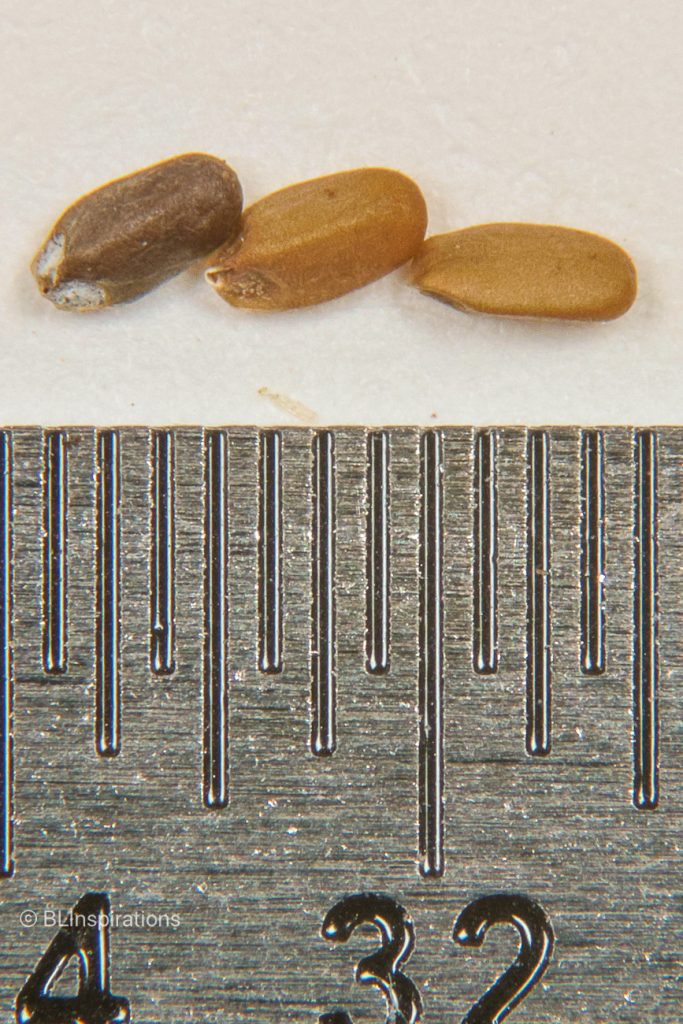
Additional Information
Wikipedia: Monarda fistulosa (bee balm)
bplant.org: Wild Bergamot (Monarda fistulosa)
FloraQueen: From Bud to Bloom: The Life Cycle of a Flower
Technical Information
Bee Balm Flower Clusters
- Date: 7/24/2024
- Time: 9:27 AM
- Camera: Canon EOS R7
- Lens: Sigma 24-105mm f/4 IS DG OS HSM
- Settings:
- Lens: 105 mm, f/11
- ISO: 400
- Shutter: 1/250 sec
- Cropped image is 4844 x 3229 px
Bee Balm Seed Head (green)
- Date: 8/4/2024
- Time: 11:08 AM
- Camera: Canon EOS R7
- Lens: Sigma 105mm f/2.8 EX DG OS HSM Macro
- Settings:
- Lens: 105 mm, f/8
- ISO: 1600
- Shutter: 1/125 sec
- Cropped image is 6960 x 4608 px
Bee Balm Seed Head (dry)
- Date: 8/26/2024
- Time: 12:58 PM
- Camera: Canon EOS R7
- Lens: Sigma 105mm f/2.8 EX DG OS HSM Macro
- Settings:
- Lens: 105 mm, f/11
- ISO: 1600
- Shutter: 1/100 sec
- Uncropped image is 6960 x 4640 px
Bee Balm Seeds
- Date: 8/27/2024
- Time: 4:55 PM
- Camera: Canon EOS R7
- Lens: Sigma 105mm f/2.8 EX DG OS HSM Macro
- Settings:
- Lens: 105 mm, f/11
- ISO: 1600
- Shutter: 1/80 sec
- Cropped image is 6039 x 4026 px
Bee Balm Seeds Closeup
- Date: 8/28/2024
- Time: 7:27 PM
- Camera: Canon EOS R7
- Lens: Sigma 105mm f/2.8 EX DG OS HSM Macro with 68mm Extension Tube and 2.0x Teleconverter (346 mm total)
- Settings:
- Lens: 346 mm, f/11
- ISO: 1600
- Shutter: 1/13 sec
- Cropped image is 3046 x 4568 px
